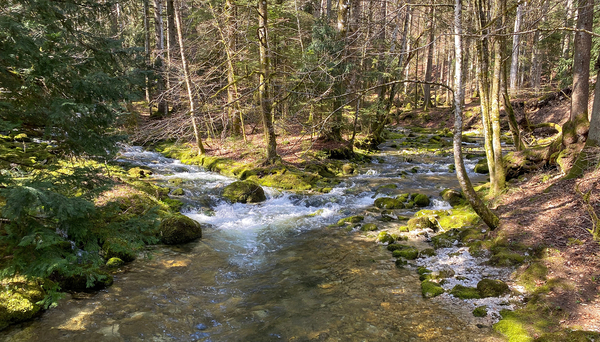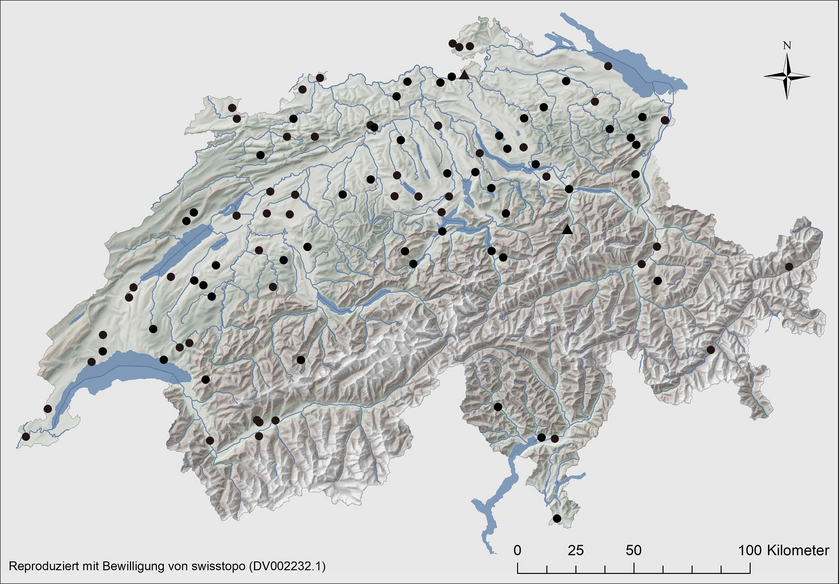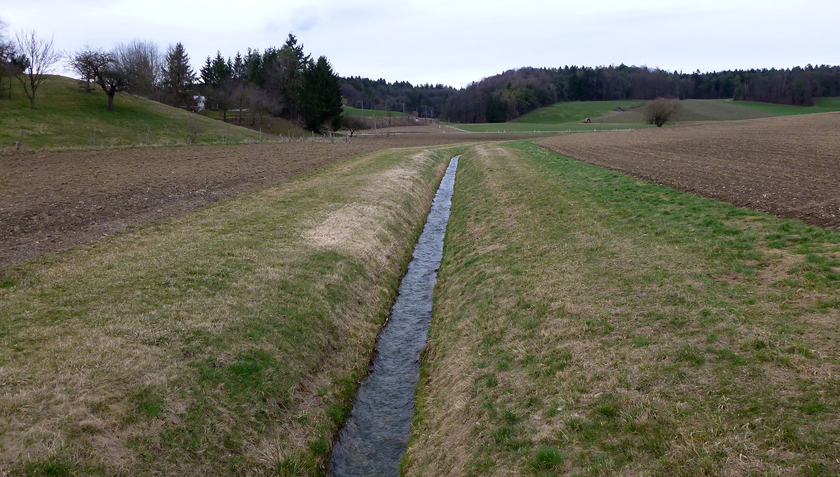News Detail
Deficits in the ecological state of small Swiss streams
May 6, 2024 |
Small streams represent the largest part of Switzerland's 65,000 km long river network and are home to a wide diversity of fauna. However, many of these streams are severely impacted by human activities. Almost a quarter of them are culverted or impacted by modifications of the stream bed structure. Moreover, the streams located in catchments with a high proportion of agricultural surfaces are often polluted with pesticides.
In order to obtain a differentiated picture of the ecological condition of the small streams in Switzerland, 99 streams in the central plateau, parts of the Jura and the floors of major valleys were sampled. The study was carried out jointly by the VSA Platform for Water Quality, Eawag and the University of Zurich. The results were recently published in the journal Aqua & Gas.
The selection was intended to cover a wide range of human impacts. Fish and macrozoobenthos were selected as indicators for their ecological state. Macrozoobenthos include invertebrates visible to the naked eye living on stream and lake beds. Some species of this community react highly sensitive to changes in their environment, such as pollutants, constructions in and around the stream or land use in the catchment area. The diversity of these small creatures therefore enables important conclusions to be drawn regarding water and stream habitat quality.
Only around 20% in near-natural condition
The survey of the macrozoobenthos and fish show that high levels of agricultural pesticide contamination in small streams, already documented in previous studies, lead to a lack of sensitive insects in these streams. The majority of the examined streams can only perform their function as a habitat for animals to a limited extent. An impairment of these aquatic organisms caused by human impact was observed in around 80% of the sampling sites. The biotic community is only near-natural and appropriate to the location in around 20% of the sites.
The study therefore confirms that the insect communities in a large portion of these small streams are significantly impacted by pesticide pollution and poor ecomorphological conditions. It also underlines the urgency of measures to protect and revitalise these waterways. A reduction in human impact is crucial in order to preserve habitats for animals and to protect biodiversity.
Cover picture: Not all Swiss streams are in a near-natural state like the Orbe in the Canton of Vaud (Photo: Adobe Stock).



